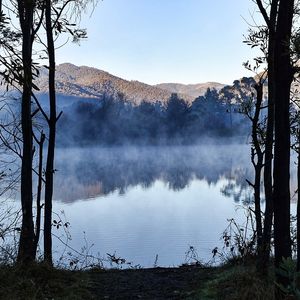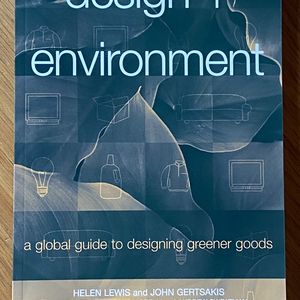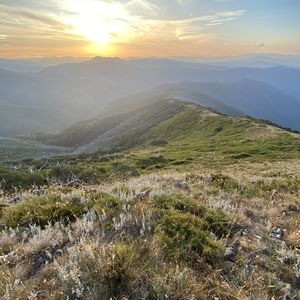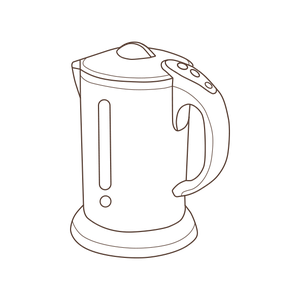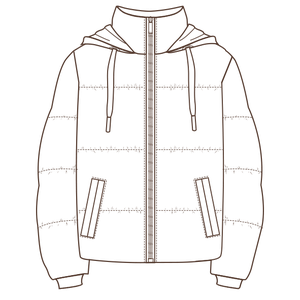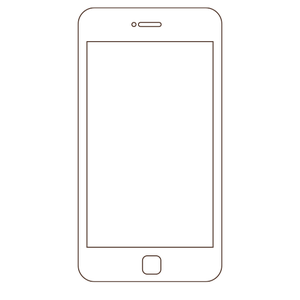John Gertsakis
Good Natured - Design
GOOD NATURED: design art architecture celebrates creative projects by designers, artists and architects working to design a better future. These practitioners are focussed on creating outcomes that are both beautiful and good for the planet.
About John Gertsakis
John Gertsakis is a sustainability practitioner living in the Alpine Shire, Victoria on Dhudhuroa and Jaithmathang Country. He is an experienced industry adviser, consultant, research academic and advocate who has built a career encouraging and activating good and responsible design. John’s work as a photographer also uses design and art to share visions of our beautiful country to encourage others to care for it.
John is a director of the Australian Product Stewardship Centre of Excellence, an adjunct professor with the Institute for Sustainable Futures at UTS, and co-founder of the Ewaste Watch Institute. John is also a member of the Minister Plibersek’s Advisory Group on the Circular Economy recently established by the Australian Government.
Connect with John:@blooplanet
John's Projects
John’s philosophy of practice is based on a deep sense of stewardship and concepts of responsibility with a view to ensuring environmental protection, sustainable development and circularity. It is driven by practical action, be it through policy reform and/or real-world implementation. What informs my work is a system-wide view that talks to connectedness, good design and diversity. This is further underpinned by a multidisciplinary approach that is inclusive, respectful and solution-oriented. John’s work and its outcomes seek to be environmentally responsive, economically sensible and socially desirable. Consuming Differently focusses on Vivienne Westwood’s now well know phrase ‘buy less, choose well, make it last’ coined in 2013. The essence of her mantra was to highlight that we buy too many clothes we don’t need and that quality should come ahead of quantity. Emphasising that consumption of clothing is a major cause of waste and pollution.
In John’s rucksack for most of this journey has been his camera. It has been his ‘visual notepad’ to record, recall, enjoy, share and compare over four decades of releasing the shutter. From the days of colour print film and the richness of Kodachrome and Ektachrome slides, to the latest in digital cameras and smart phones, John has harnessed photography and its ability to inspire, inform and soothe. It has documented all the significant places worthy of protection and conservation.
Ultimately the totality of his work, landscape adventures and photography, is about achieving positive change that is environmentally necessary and economically responsible, whilst also socially and culturally desirable.
John's Good Natured Action
John has suggested a simple action that all of us can do to make an impact. To read the essay supporting this action visit the Object Digital page here.
Consuming Differently expands and applies Westwood’s mantra along a theme revolving around everyday products: the smart phone, the electric kettle and the down jacket.
How do we buy less when it comes to electric kettles; how do we choose well when we think of the next smart phone; and how can we extend the life of clothing such as down jackets.
Buy Less – Taking the heat out of boiling water
Over 130 million kettles were produced in 2022. Consider the following ways to buy less and buy better when it comes to kettles.
- The most environmentally preferred kettle is often the one you already own.
- When buying look for double-wall kettles that keep water hotter longer and don’t need to be reboiled often.
- Less boiling means less energy consumed and reduced carbon emissions.
- Buy kettles made from environmentally improved, recycled or renewable materials.
- Only boil the amount of water required for the immediate need.
- Extend the life of your kettle by cleaning the element and vessel interior, especially where water quality or hardness may impinge boiling efficiency.
- Donate your kettle to an organisation where it can be tested, repaired and refurbished for a second life e.g. Vinnies or the Salvos.
- Get a damaged kettle repaired to replace broken or faulty components, including elements.
- When it reaches the end of its useful life make sure it’s recycled so materials such as plastics and metals are recovered for new products.
Choose Well – Connecting consciously with purpose
Mass production of smart phones uses non-renewable metals and rare earths, manufacture and shipping generates carbon emissions and the e-waste is toxic if not recycled properly.
- The most environmentally preferred smart phone is often the one you already own.
- Does the phone contain post-consumer recycled materials?
- Is it designed for disassembly and ease of repair and parts replacement?
- Can it be disassembled for repair and does the brand/ manufacturer provide self-repair guidance, parts and repair kits?
- Learn how to manage your phone to maximise battery health and life.
- Extend the life of your phone by protecting it with cases and screen covers, reducing unnecessary damage and premature disposal or upgrade.
- Repurpose an old phone for other uses e.g. playing music, photo-storage.
- Hand your phone down to family and friends for a second or third life.
- Donate or gift your phone to a socially or environmentally oriented cause e.g. The Reconnect Project.
- Cash-in or trade your old phone so it gets refurbished for second life with another user e.g. Mazuma or PhoneCycle.
- When it reaches the very end of its useful life, make sure it’s recycled so the data is destroyed and the materials are recovered to make new products e.g. MobileMuster.
Make it Last – Enduring warmth with ethics
Clothing textile waste is one of the planet’s most serious waste challenges - extending a garments life through appropriate care and repair is now a key environmental goal.
- The most environmentally preferred down jacket is often the one you already own, albeit with mending, patching and repair.
- Made with down certified to the Responsible Down Standard and Global Traceable Down Standard.
- Does the fabric used in the down jacket hold Bluesign certification for chemicals management?
- Does the jacket’s shell or lining fabric contain post-consumer recycled materials, or waste plastics that have been transformed and repurposed e.g. end-of-life fishing nets?
- Check the annual Ethical Fashion Guide to see how different clothing brands perform and compare.
- Does the jacket feature water repellent coating free from per fluorinated chemicals which includes PFAS and PFOS?
- Does the jacket come with a repair service or guidance, instruction and/or repair kits to fix it for longer life?
- Does the brand or retailer provide a buy-back or trade-in program/service or a lifetime warranty or product replacement pledge for normal wear and tear of the down jacket?

